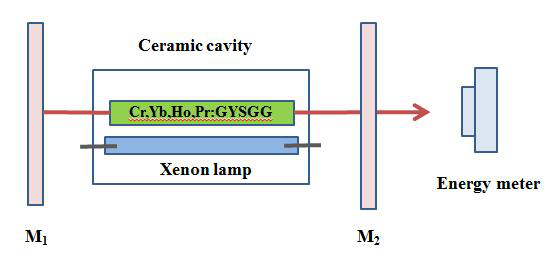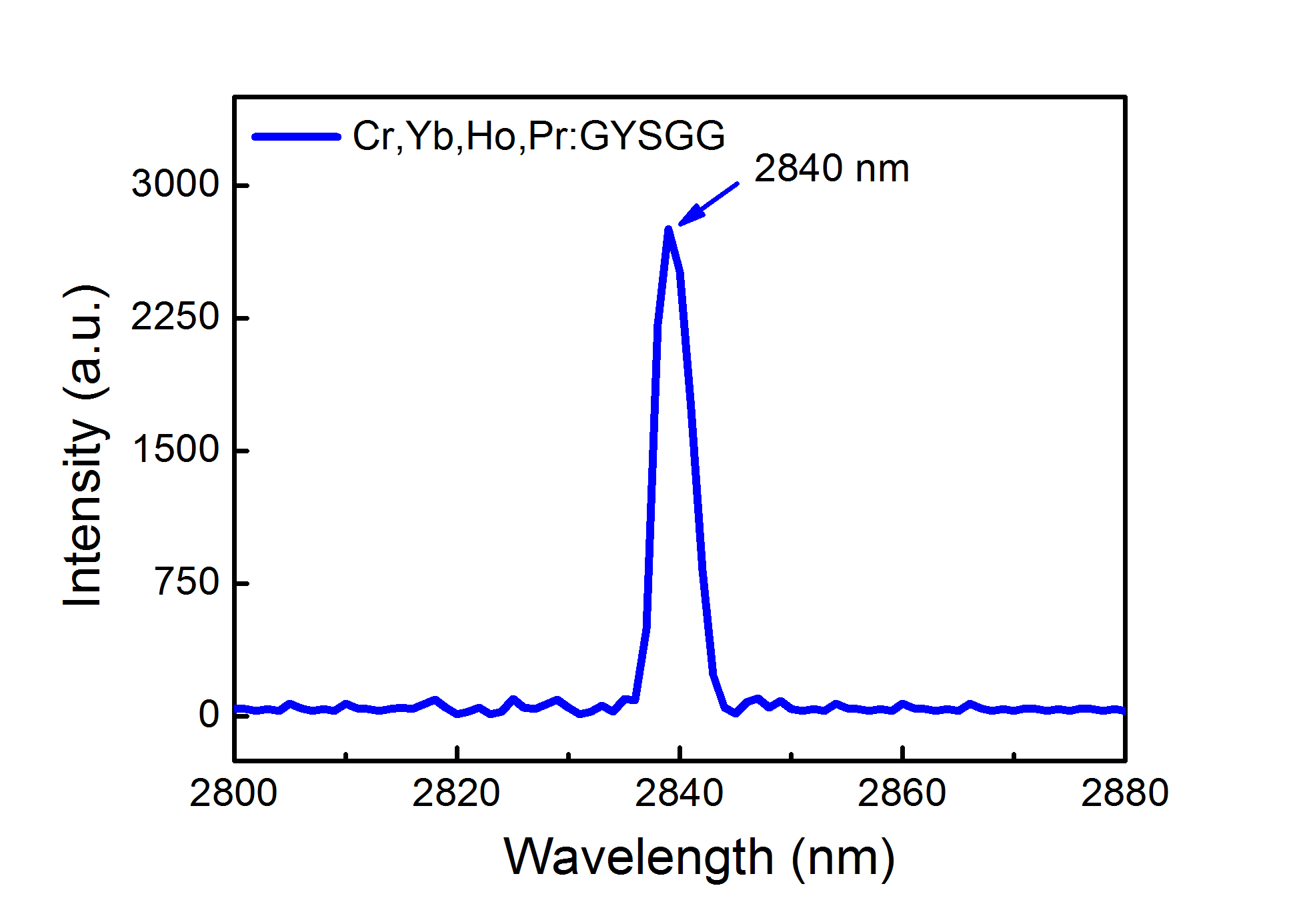Solid state lasers operating in 2.7-3.1 μm have wide applications in medical procedures and environmental monitoring.
The recent research was conducted by SUN Dunlu’s research group at Anhui Institute of Optics and Fine Mechanics (AIOFM), Hefei Institutes of Physical Science. A radiation-resistant Cr,Yb,Ho,Pr:GYSGG crystal which can make for low threshold laser output compared with GSGG crystal was obtained successfully by the Czochralski method for the first time.
The results show that the Cr3+ and Yb3+ acted as the sensitizer make the crystal suitable for flash lamp or LD pumping.
In general, the lifetime ratio between the 5I7 and 5I6 levels of the Ho3+ ions is relatively large, which is disadvantageous to lase. In this work, the co-doping Pr3+ as the deactivator ions can relieve this problem by depopulating the Ho3+ ions at the 5I7 level.
Moreover, they further investigated the laser performances of the crystal pumped by a flash lamp, and a 2.84 μm mid-infrared pulse laser was realized on the Cr,Yb,Ho,Pr:GYSGG crystal for the first time.
The study indicates that the Cr,Yb,Ho,Pr:GYSGG crystal is a new promising radiation-resistant laser gain medium which can be applied in radiant environment.
Link to the paper: Growth, spectroscopy, and laser performance of a radiation-resistant Cr,Yb,Ho,Pr:GYSGG crystal for 2.84 μm mid-infrared laser

Schematic of the xenon lamp pumped Cr,Yb,Ho,Pr:GYSGG laser. (Image by ZHANG Huili)

Absorption spectrum of the Cr,Yb,Ho,Pr:GYSGG crystal. (Image by ZHANG Huili)

Output energy versus pump energy operated at 1 Hz and 5 Hz with output coupler transmission of 5%. (Image by ZHANG Huili)

Laser spectrum of the Cr,Yb,Ho,Pr:GYSGG crystal. (Image by ZHANG Huili)
Contact:
ZHOU Shu
Hefei Institutes of Physical Science (http://english.hf.cas.cn/)
Email: zhous@hfcas.ac.cn
 Tel: +86-551-65591206
Tel: +86-551-65591206
 Fax: +86-551-65591270
Fax: +86-551-65591270
 Emai: zhous@hfcas.ac.cn
Emai: zhous@hfcas.ac.cn
 350 Shushanhu Road
350 Shushanhu Road